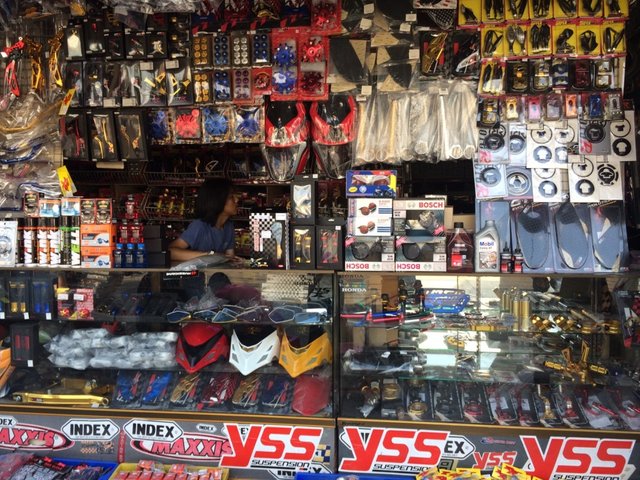Unleash Performance with Premium Motox Parts NZ Available Below
Unleash Performance with Premium Motox Parts NZ Available Below
Blog Article
Comprehending the Vital Parts of a Motorcycle: A Comprehensive Guide for Lovers
For motorbike enthusiasts aiming to elevate their riding experience and guarantee their bikes run efficiently, recognizing the crucial elements of a motorcycle is critical. Each component, from the engine's detailed functions to the essential function of the stopping devices, not just affects performance however likewise security and comfort. This overview will go through the fundamental components that every biker need to know with, allowing informed choices in both maintenance and prospective upgrades. As we begin this expedition, one must ask: exactly how does each part connect to produce the smooth adventure every fanatic looks for?
Engine Parts

The camshaft plays an important duty in managing the timing of the engine's valves, ensuring the specific opening and closing needed for efficient gas and air consumption, as well as exhaust expulsion. This timing is important to maintaining optimal engine efficiency and effectiveness. In addition, the carburetor or gas injection system, depending upon the motorbike version, is accountable for blending air with fuel in the appropriate ratio for combustion.
The cooling system, either air or liquid-based, functions to keep the engine's temperature within functional limits, protecting against overheating and making sure long life - motorbike shop. Each part, carefully created and incorporated, adds to the seamless operation of the engine, defining the bike's power output and overall performance
Transmission System
Important to the bike's performance, the transmission system makes sure reliable power transfer from the engine to the wheels. This system comprises a number of critical components, including the clutch, gearbox, and final drive, each playing an essential duty in converting the engine's power right into activity. The clutch, generally operated by a hand lever, serves to disengage the engine and engage from the transmission, permitting for smooth gear adjustments and regulated velocity.
The transmission, usually described as the transmission proper, contains a set of gears that motorcyclists can by hand change with to readjust the bike's speed and torque outcome. These equipments are arranged in a series that makes it possible for the motorbike to increase efficiently and preserve optimal engine performance across numerous rates. A lot of motorcycles use a sequential gearbox, calling for the rider to change equipments in a fixed order.
Braking Systems
While understanding the transmission system is key to utilizing a motorcycle's power, just as crucial is the capability to control and quit that power properly, which is where braking mechanisms come right into play. Brakes are crucial for safety and security and efficiency, supplying the cyclist with the needed control to navigate numerous terrains and conditions. Typically, bikes feature two kinds of stopping systems: disc brakes and drum brakes.
Disc brakes are extra common in modern-day motorcycles due to their exceptional performance. This system provides far better heat dissipation, regular description efficiency, and boosted stopping power, particularly in wet problems.
On the other hand, drum brakes, though much less common, are still located in some motorbikes. They function by pushing brake shoes against the internal surface area of a drum connected to the wheel. While typically less reliable in heat dissipation and stopping power, drum brakes are easier and extra cost-efficient.
Comprehending these stopping systems' subtleties permits riders to preserve their bikes effectively and value the engineering that makes sure safe and efficient stopping.
Suspension and Steering
Suspension and steering systems are important parts that significantly affect a bike's handling and adventure comfort. The shock absorber, being composed of forks at the front and shock absorbers at the back, soaks up roadway irregularities, enhancing stability and control. Front forks, normally telescopic or inverted, compress and rebound to reduce impacts, while rear shock absorbers keep tire contact with the road, crucial for grip and security.
Steering, centered around the handlebars, connects the biker to the motorbike's directional control. The steering head bearings guarantee smooth operation, allowing precise ability to move. Correct placement and maintenance of these bearings are important for predictable steering feedback and lowering cyclist exhaustion.
The suspension's adjustability is one more crucial aspect; preload, damping, and rebound settings permit personalization to suit different riding designs and conditions. This adaptability is necessary for enhancing performance, whether browsing urban roads or dealing with rugged tracks. Advancements like electronic shock absorber use real-time modifications, improving trip top quality across diverse surfaces.

Electric Solutions
After making certain a controlled and smooth trip via efficient suspension and steering systems, focus turns to the electric systems, a pivotal element of modern-day motorbikes. These systems play a crucial function not just in starting the engine yet also in powering different parts that enhance the capability and safety of the motorcycle.
At the heart of a motorbike's electric system is the battery, which stores electric power necessary for starting the engine and powering complementary systems - motocross parts nz. The alternator or generator, combined with the rectifier-regulator, makes sure the battery continues his explanation to be billed while the motorbike is in procedure, transforming mechanical power into electric power and keeping voltage degrees
The ignition system, an additional vital part, is in charge of firing up the air-fuel blend in the engine's cyndrical tubes. Modern motorcycles typically use a digital ignition system, using better effectiveness and dependability compared to standard systems.
Illumination systems, consisting of headlights, tail lights, and indicators, are additionally crucial, guaranteeing exposure and security for the biker. Extra digital parts such as sensing units, control systems, and presents contribute to innovative features like gas shot monitoring, anti-lock stopping systems (ABDOMINAL MUSCLE), and electronic dashboards, additionally improving the riding experience.
Final Thought
An extensive understanding of a motorcycle's essential parts, consisting of the engine, transmission system, stopping systems, suspension, steering, and electric systems, is crucial for enthusiasts intending to optimize safety and security, performance, and convenience. Proficiency of these aspects permits informed decisions pertaining to maintenance and upgrades, inevitably improving the riding experience. By incorporating this knowledge, cyclists can ensure their motorbikes run at peak efficiency and reliability, consequently optimizing both enjoyment and durability of their lorries.
For bike lovers looking to boost their riding experience and guarantee their bikes run smoothly, understanding the crucial parts of a motorbike is paramount.Essential to the motorcycle's performance, the transmission system makes sure reliable power transfer from the engine to the wheels.While comprehending the transmission system is vital to utilizing Going Here a motorbike's power, just as important is the capacity to regulate and stop that power efficiently, which is where stopping systems come right into play. Typically, bikes feature two kinds of stopping systems: disc brakes and drum brakes.
A comprehensive comprehension of a motorbike's vital components, including the engine, transmission system, braking devices, suspension, guiding, and electric systems, is essential for lovers intending to enhance security, efficiency, and comfort.
Report this page